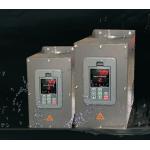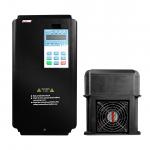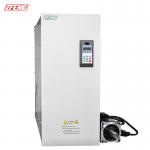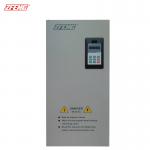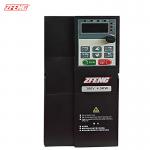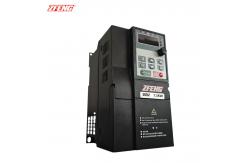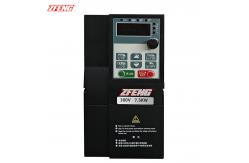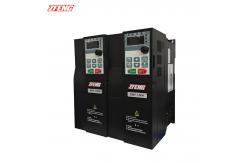ZFeng 310 Series 7.5Kw-T-G General Vector Variable Frequency Drive
A vector drive is a type of power converter that uses vector
control technology to manage the speed and torque of AC motors.
Unlike traditional fixed-frequency drives or scalar-controlled
drives, vector inverters utilize advanced mathematical models to
decompose the motor's current into two orthogonal components: the
excitation current and the torque current. This decomposition
allows for independent control of the magnetic flux and torque,
resulting in superior control performance.
The core principle of vector control involves transforming the
three-phase AC current into a rotating reference frame (dq frame)
that aligns with the motor's rotor flux. By regulating the dq-axis
currents, the inverter can achieve precise control over the motor's
speed, torque, and position, even under varying load conditions.
Key Features and Technical Advantages
- High Precision Control: Vector control enables accurate speed and
torque regulation, with typical speed control accuracy reaching
±0.1% and torque response within milliseconds.
- Wide Speed Range: Supports smooth operation from zero speed to
maximum rated speed, eliminating the need for additional sensors or
encoders in many applications.
- Enhanced Torque Performance: Provides full torque at zero speed and
superior torque response during acceleration and deceleration,
making it ideal for applications requiring high starting torque.
- Energy Efficiency: Advanced algorithms optimize power consumption,
reducing energy waste and operational costs.
- Adaptive Control: Many vector inverters feature adaptive control
capabilities that automatically adjust parameters based on motor
characteristics and load conditions, simplifying setup and ensuring
optimal performance.
- Communication Interfaces: Often equipped with RS-485, Ethernet, or
other communication interfaces for integration with industrial
networks and remote monitoring.
Importance in Modern Industry
Vector inverters play a crucial role in modern industrial
automation by:
- Improving Production Efficiency: Enabling faster and more accurate
control of motor-driven equipment, reducing cycle times and
increasing throughput.
- Enhancing Product Quality: Providing consistent speed and torque
control, leading to improved product consistency and reduced
defects.
- Reducing Energy Consumption: Optimizing motor operation and
reducing energy waste, contributing to lower operational costs and
environmental benefits.
- Increasing System Flexibility: Supporting a wide range of motor
types and applications, simplifying system design and integration.

